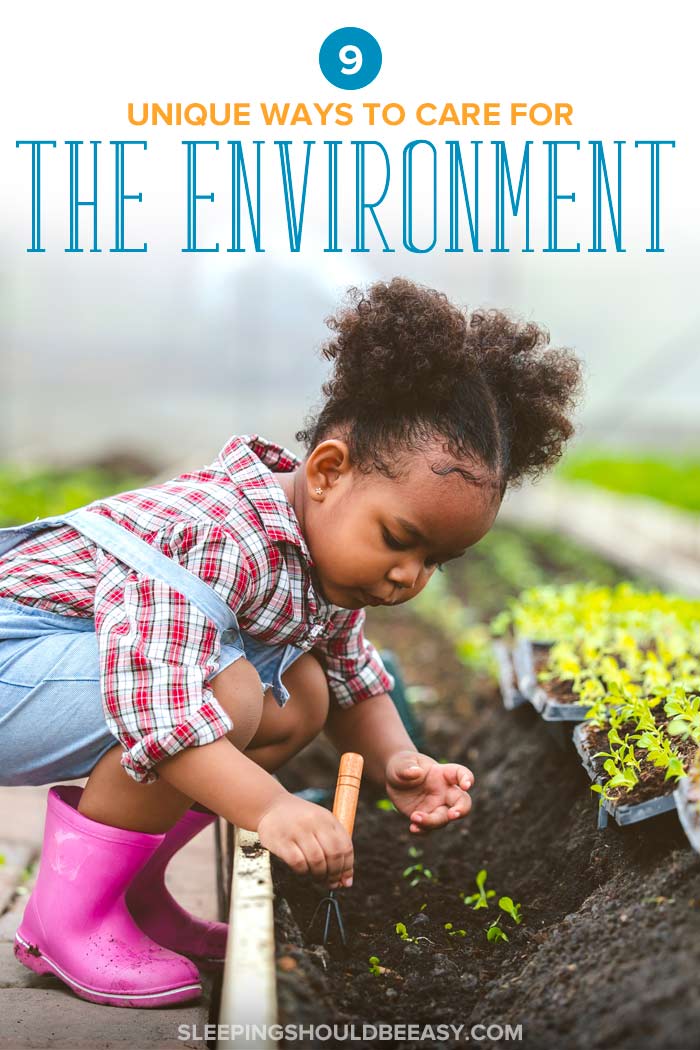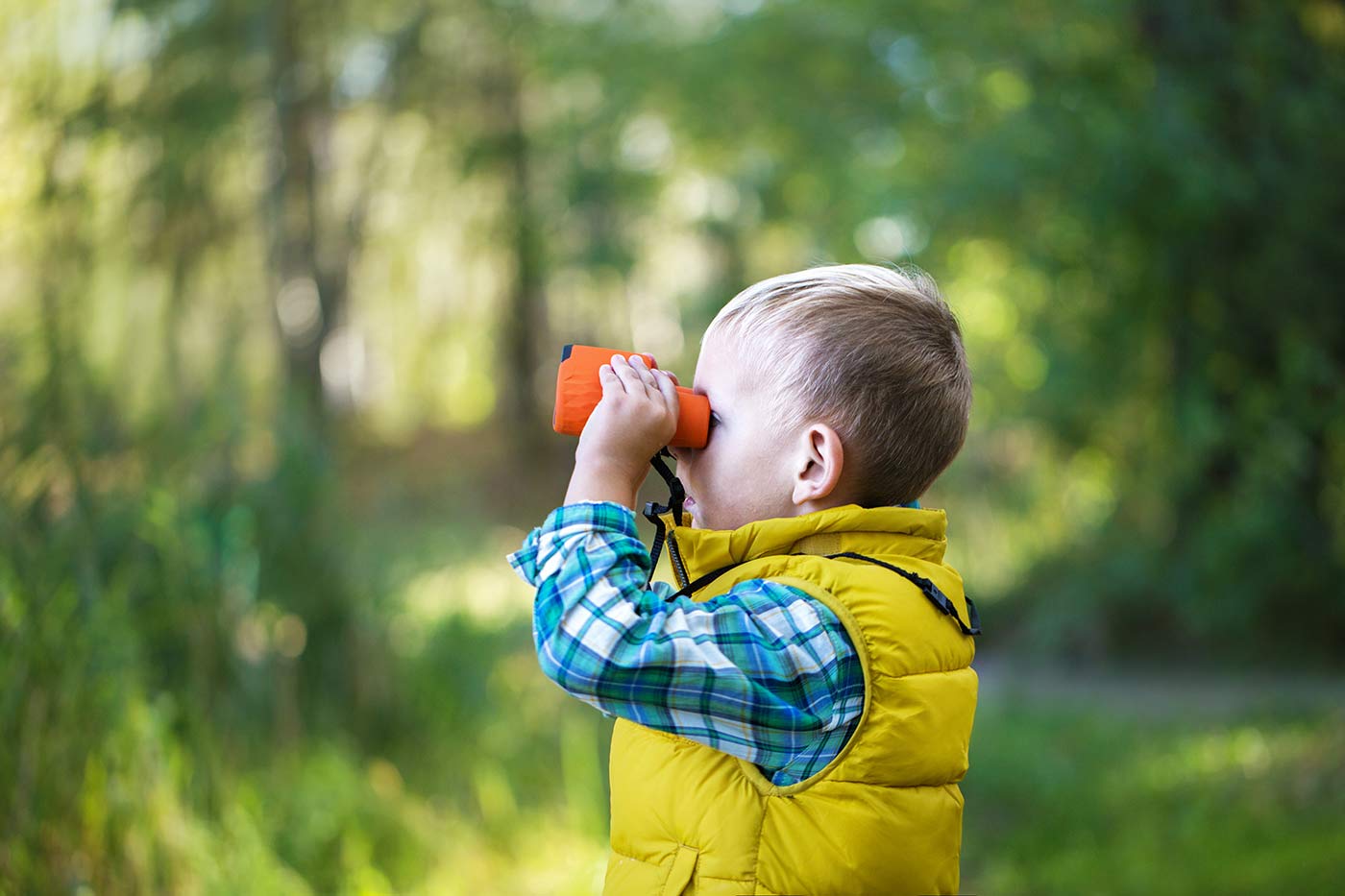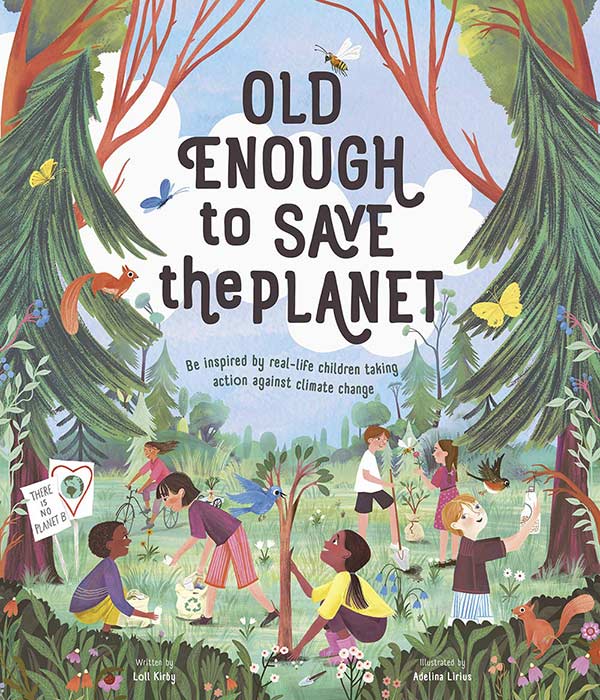10 Unique Ways to Care for the Environment as a Family
Want your kids to protect the planet? Teach them these unique ways to care for the environment that the whole family can do!

Shocking headlines can drive many of us into fear and despondency, making us think we can’t do much to care for the environment. We hear frightening numbers about pollution or feel anxious about natural disasters across the globe.
No wonder kids can feel down about the state of the environment, worried about the tragedies they hear all around them.
That’s why we need to show them what they can do to fight it, or the efforts you’re making as a family to turn things around. You see, caring for the environment is less of a thing to “do” and more of a lifestyle. You and your family can adopt many ways of living that contribute to preserving the planet.
Band together as a family and try these simple and unique ways to care for the environment:
Table of Contents
1. Borrow from the library
The library—an eco-friendly option? Yup. The more you borrow instead of own, the fewer materials you consume. Rather than piling books at home you read just once, you can borrow and return them for someone else to use.
And the same is true for movies and music that are best shared, especially if you only watch or listen to them once. Besides, borrowing from the library not only helps care for the environment but promotes learning and literacy as well.
Free email challenge: Looking for actionable steps and quick wins in parenting? The Better Parenting 5-Day Challenge is for parents who know they want to improve but need that little nudge and supportive guidance to do so.
When you join the challenge, you’ll get one actionable tip per day that you can do to transform the way you raise your child. This is your chance to challenge yourself and make the changes you’ve been meaning to make. Join my newsletter and sign up today—at no cost to you:
2. Take your child on nature outings
Your child will want to take action to protect the earth when he understands what’s at stake. A nature outing is both a relaxing and beautiful way to be together as well as a necessary step to show him exactly what we can continue to enjoy.
He can explore and see for himself the importance of nature, driving him to appreciate all it has to offer. And the outdoors is simply a fun and open-ended way to play and spend the day.
Even if you live in a city like I do, plenty of nature spots are still available to visit. Below are a few of our go-to outings, both simple and grand:
- Hiking trails
- Botanical gardens
- Beaches
- Forests
- Parks (even your local ones)
- Lagoons
- Wetlands
- Waterfalls
- Nature centers
Take a look at these outdoor activities for 3 year olds.

3. Grow a garden
I’m a little obsessed with gardening these days. From growing in raised beds to chipping branches into mulch, gardening at home is one of the best ways to make an impact on the environment.
Here are just some of the benefits of gardening related to climate change. By gardening and especially growing your food, you:
- Grow local fruits and vegetables, cutting down on the mileage that trucks drive to bring food to the grocery stores.
- Eliminate toxic chemicals that are harmful to both the ecosystem and people.
- Sequester carbon in the soil. So long as you don’t till and shovel your soil, your plants are sucking up carbon from the atmosphere and keeping them in the ground.
- Provide oxygen and moisture through photosynthesis. The more plants we have, the more humidity we get.
- Prevent waste. You’re less likely to throw food you grow than the ones you bought from the grocery.
A garden is also a fantastic way for your child to understand the growth process of a plant. She learns that seeds sowed in the soil can later grow, all with a little help from water, the sun, and good soil.
And you don’t need a backyard, either—container gardening works just as well. Back at our old apartment, all I needed were a few containers, potting soil, and seeds. Within days, all the seedlings grew and thrived. We were able to harvest the spinach and prepare a few recipes with them.
Expert tip
Compost food waste and old kitchen scraps! Organic waste like carrot peels and apple cores combined with fallen leaves make for a great compost that you can then cycle back into your garden.
4. Instill values of “enough”
Frugality isn’t only about saving money or pinching pennies—living with “enough” ties in so much to our environment.
After all, less excess and consumption means we use just enough resources without being wasteful. And it’s not about never buying clothes or patching a hole for the tenth time. Instead, you could teach your child the values of:
- Fixing broken items first before replacing them
- Making do without an item
- Using only enough and no more
- Teaching them not to be materialistic
- Taking care of our belongings
- Promoting open-ended toys and crafts with simple materials
5. Shop at farmers markets
Every Sunday, my family and I make a short trek to our local farmers market for fresh food. Sure, we still head to the grocery store to pick up the items we can’t find. But by shopping at farmers markets, we’re helping to care for the environment.
You see, local farmers travel fewer distances to bring you food, using less gasoline. They also tend to practice clean farming with no pesticides. They grow a variety of high-nutrient food, creating a system that relies less on human intervention and more on nature.
And you’re also able to use less plastic and packaging at the farmers market. For instance, bring reusable containers to pack strawberries, or return honey and jam jars to the vendors.
6. Read about the world
My family and I don’t travel a lot, so exposing our kids to different parts of the world isn’t exactly feasible. So, we compensate by reading and learning about the world and the planet.
We’ve read books about countries and their customs, and my kids have a “travel list” that includes South America, Egypt, and the Grand Canyon. Learning about the earth’s landmarks and resources enforces stewardship for a planet we need to care for.
Even if the books don’t talk about saving the planet, exposure to the wider world instills the importance of caring for and appreciating it.
7. Buy reusable household items
Disclosure: This article contains affiliate links. As an Amazon Associate, I earn from qualifying purchases.
Think about all the items we use once and dispose of. Now, consider whether there’s a reusable version you can try. For instance, here are a few items my family and I have bought to replace disposable items:
- Sponges: Ditch disposable sponges and use these washable ones instead (they’re also more hygienic since you wash them often).
- Snack bags: Replace flimsy plastic with these reusable bags.
- Straws: Regular and boba or smoothie straws cut down on plastic.
- Produce mesh bags: I always hated using those plastic bags at the grocery store. Mesh bags are much more versatile!
- Rags: Cut down on paper towels by re-purposing old burp cloths and dish towels into rags. Want the kitchen to look cute? Use “unpaper towels.”
- Mason jars: I reuse these to drink water from at home. They have yet to break (whereas my original set of glasses have all broken!).
- Reusable water bottles: A reusable bottle can replace single-use plastic ones or even plastic-lined paper cups. Filtered tap water is often cleaner (and more regulated) than bottled.
If you happen to have a plastic bag (from restaurant take-out, for instance), reuse them! Even if they’re dirty, wash them in the sink and reuse them to line trash cans.
And if using disposable items makes more sense, try to get those that make less of an environmental impact. For instance, if you can’t use silverware for a large party, wooden utensils and dishes can be a better choice than their plastic version.
8. Use second-hand
Using items that already exist helps to slow down the creation of new ones that likely use raw materials and natural resources. Buying a picture frame from a second-hand store means that’s one less picture frame a company has to make.
And think about whether you need to buy products in the first place. Do you really need to make that purchase, or could you borrow it or use something you already have?
Many communities have also started Buy Nothing groups online where you can post items to give to others or ask for particular ones for yourself.
For instance, rather than offloading your child’s old clothes to a donation center (where there’s no guarantee they have a use for them), you can give them to someone in your community instead. Similarly, rather than buying a new Halloween costume, you can see if your neighbors might have some to give.
9. Rely less on cars
There’s no doubt that automobiles emit carbon emissions that harm the environment. Even electric and hybrid cars, however much of a better option, still rely on electricity to run and resources to be made.
Maybe you’ll ride your bike to get the kids to school, use public transportation to take them to the library, or carpool with friends to go to brunch. If you do need to drive to run errands, batch them together so you take care of those in the same area.
10. Conserve water
My family and I walked through a local hike normally overflowing with streams. This time, however, the streams were mere trickles of water. We also visited a botanical garden but found an empty lot where the lake should have been.
Water conservation has always been a top priority for us. Here are a few ways your family can conserve water:
- Collect “gray water.” Leave a tub in the sink to collect water from rinsing fruits and vegetables, as well as a bucket in the shower as you wait for water to warm up. This water is better spent watering your plants than going down the drain.
- Limit water play. As fun as it is to leave the sprinklers running or slide on water play toys, running water takes a toll. Choose alternatives like swimming in a pool or using water squirters that don’t use too much water.
- Plant drought-friendly or native plants. These plants are more drought-friendly than non-native plants and don’t need as much water.
Conclusion
Living green isn’t just recycling, hugging trees, and living off the grid.
Teach your child to appreciate nature’s beauty by reading books and exploring natural spots. Instill the values of “enough” and living within your means to avoid excess. Support systems that protect the earth like buying from farmers markets and borrowing instead of buying.
Don’t fall for the disposable lifestyle—invest in items you can reuse over and over. And try to use second-hand whenever possible so we can make use of items that already exist.
It’s simple changes to your family’s lifestyle like these that can make a big impact. Because we don’t simply want to protect the environment. We want to create an environment that doesn’t need protecting in the first place.
p.s. Check out Old Enough to Save the Planet by Loll Kirby. You’ll meet young climate change activists who remind us that kids can make a difference:
Get more tips:
- Top Educational Activities for 3 Year Olds
- Children’s Books About the Beach
- 30 Learning Activities for 2 Year Olds
- Children’s Books About Peace
Don’t forget: Join my newsletter and sign up for the Better Parenting 5-Day Challenge today—at no cost to you:



